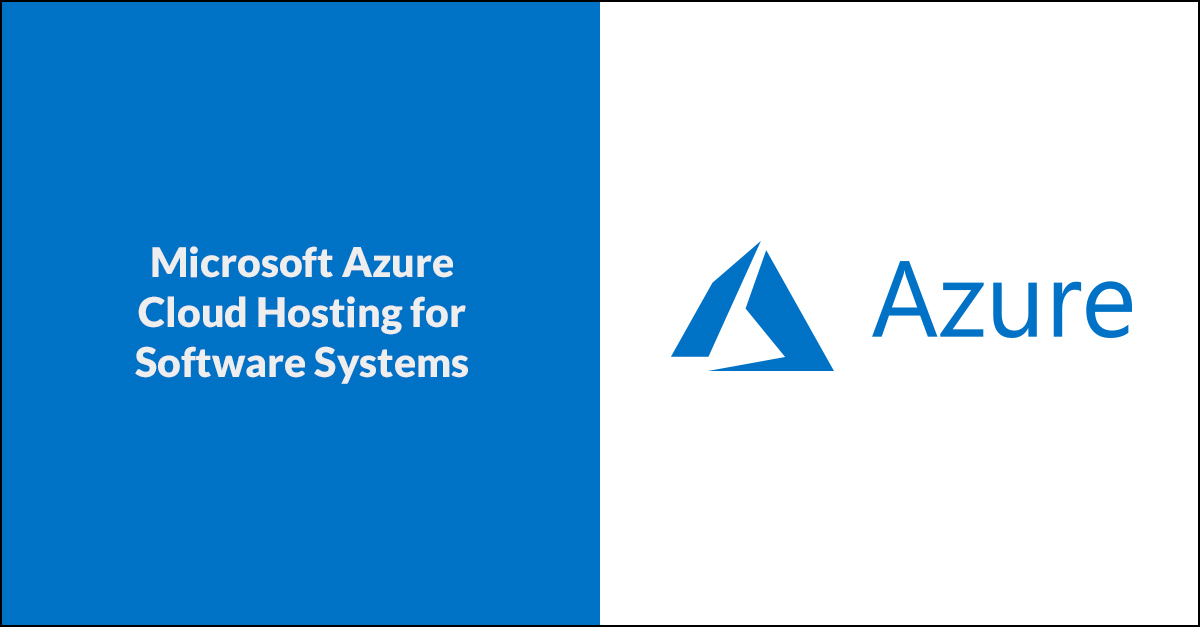
A few years ago, we got rid of our on-site servers and moved all of our internally hosted systems onto the cloud. Like other small businesses, a majority of the applications we use to perform our work on a day-to-day basis are software-as-a-service (SaaS) applications. As a result, we no longer have to worry about managing physical servers internally.
Over the last few years, we have been making a similar transition from hosting our clients’ applications on physical servers in our data center to hosting applications and services on cloud solutions such as Microsoft Azure and Amazon Web Services (AWS).
When it comes to cloud hosting, we have a few different go-to tools in our toolbelt. In this post, I’ll talk about Microsoft Azure, an enterprise-level cloud computing environment, and how we use it for clients’ software projects.
But first, let’s step back and talk about what “the cloud” is. You’ve undoubtedly heard about it, but you may not be completely clear on what it actually means. That may be because the cloud is intangible—like the internet. It’s a concept, not one particular physical thing.
Cloud computing is basically hosting your information (website, data, files, programs, etc.) on a vast network of servers connected to the internet. That’s it. So instead of hosting client applications on physical servers in our data center, we host them on the cloud, which means we have access to a large number of computing resources spread geographically around the world, most of which are in giant, highly controlled data centers.
We are gradually transitioning to hosting client systems on the cloud, and we do so because of the many benefits:
- Lower start-up costs – We don’t need to invest a lot of money into acquiring hardware and paying for staff to the keep hardware up and going.
- Practicality – We only pay for the resources we actually use.
- Scalability – It’s easy to scale up and down based on the needs of the application at any given time.
- Reliability and availability – The cloud has a robust infrastructure with redundancy to ensure the availability of applications.
- Security – Data centers take the security of their buildings very seriously. They pay just as much attention to protecting data from cyberattacks.
Now that we have that out of the way, it’s time to talk about Microsoft Azure specifically. This cloud platform is incredibly extensive and offers a lot of features that we as developers appreciate (developer tools, analytics, and management capabilities).
It also offers everything that’s important to our clients, like the things listed above. Overall, Azure offers the tools we need to build, deploy, and scale powerful web applications quickly and efficiently.
The Future of Azure
Microsoft has made several moves in recent years and months to embrace open-source technologies—most recently agreeing to acquire development platform giant GitHub—virtually guaranteeing that their cloud offerings will continue to be a strategic focus for the foreseeable future. So, we’re pretty confident Azure isn’t going to shrink or go away any time soon. And we’re looking into how it fits into our strategic plans going forward.
We have several clients already hosting their production applications on Azure and we are in the process of identifying other client applications that are currently hosted in our other data center that would benefit most from being hosted on the Azure platform. We’ll work with those clients to outline a plan for migrating those applications.
As we build new applications moving forward, Azure will be one of the options we consider for hosting.
Azure is also on our radar for the team’s learning plans. We’ll continue to build our expertise and skillsets to align with developing and deploying applications to Azure.
Do you have questions about using the cloud or Microsoft Azure for your web application development? If so, reach out.
In future posts, we’ll cover how we’ve used Azure in some of our projects and dive deeper into the specific capabilities it offers, and we’ll share how we envision them being implemented in real-world applications.